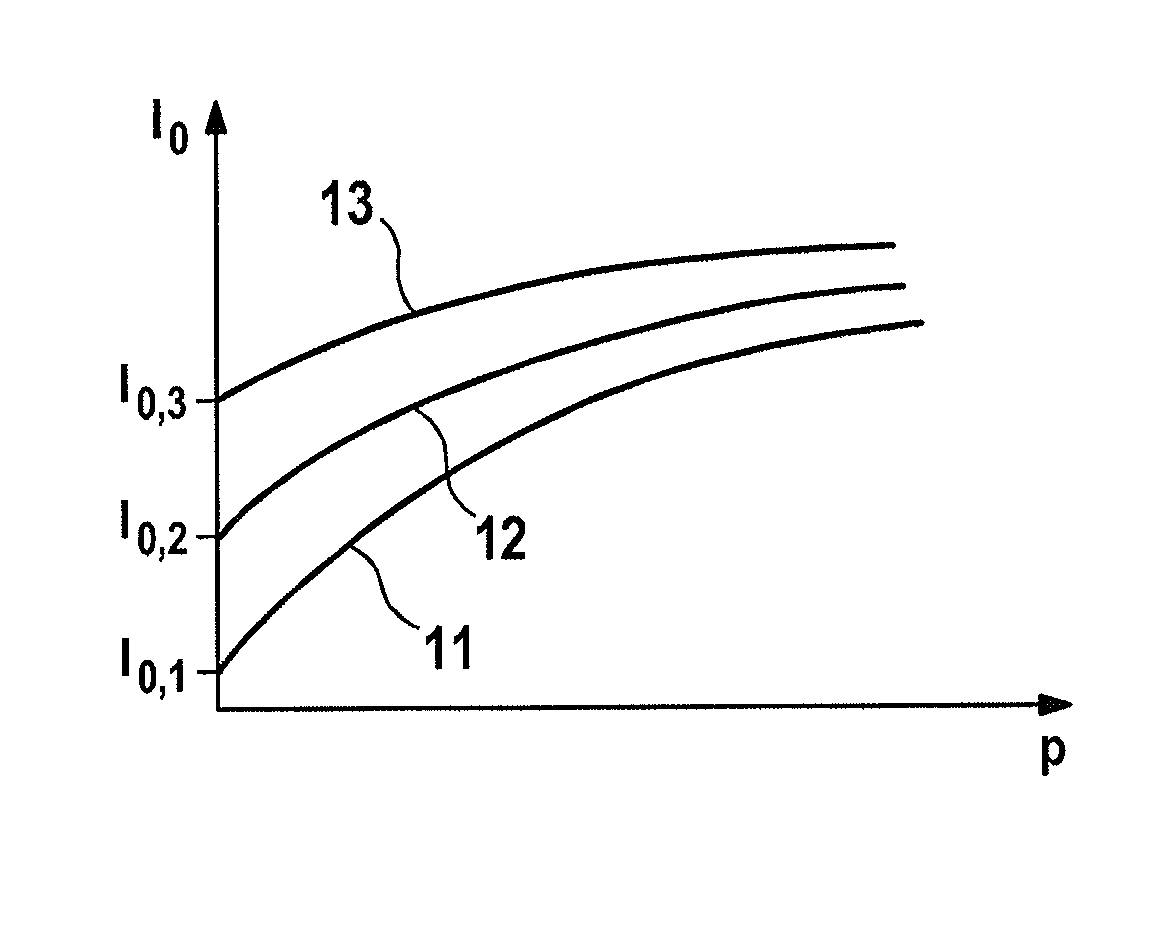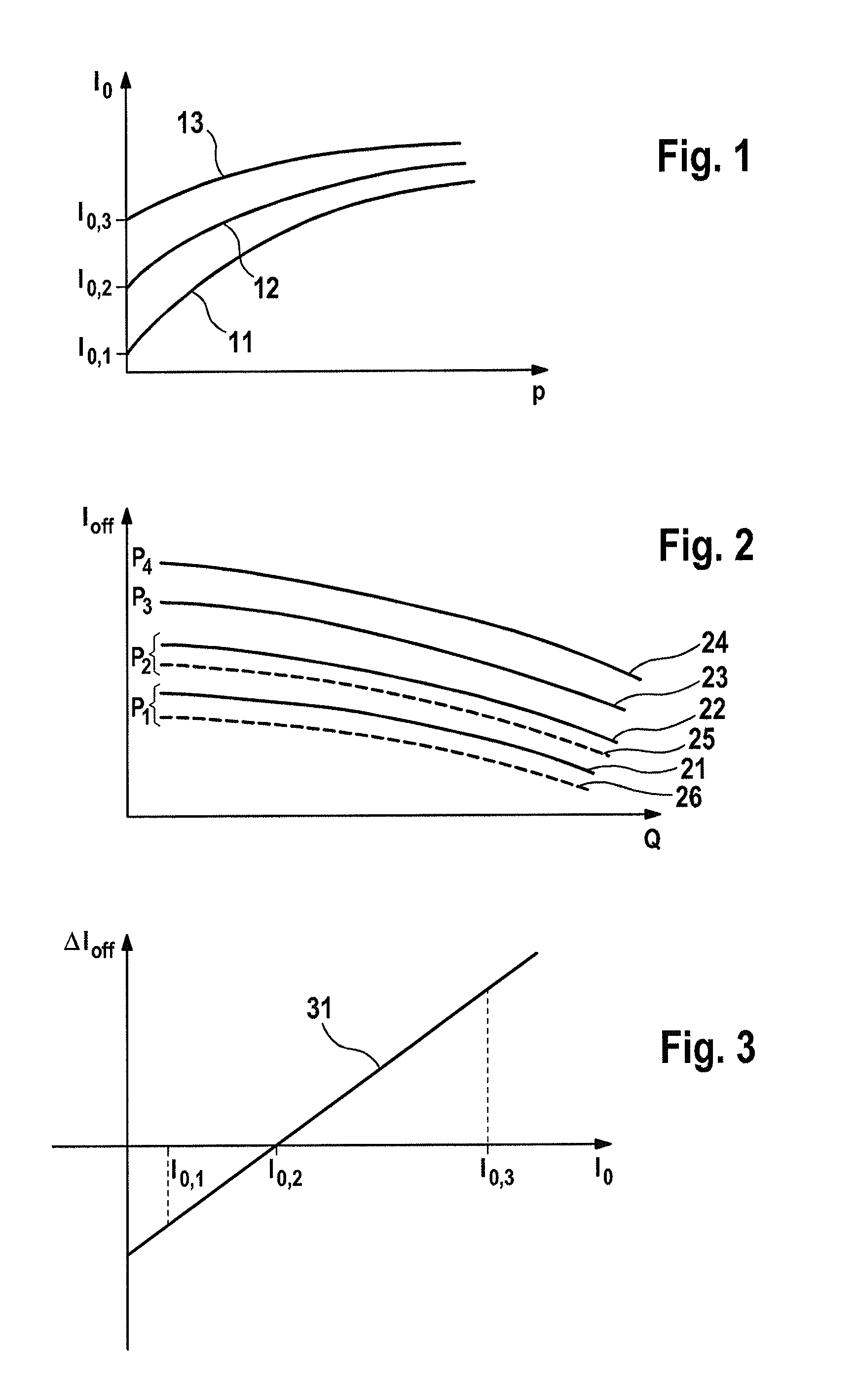Method for optimizing the pressure setting accuracy
a technology of pressure setting accuracy and pressure setting point, which is applied in the direction of brake systems, instruments, servomotors, etc., can solve the problems of not allowing precise control, and achieve the effect of eliminating pressure setting inaccuracies about pressure selection points and precise pressure adjustmen
- Summary
- Abstract
- Description
- Claims
- Application Information
AI Technical Summary
Benefits of technology
Problems solved by technology
Method used
Image
Examples
Embodiment Construction
[0040]FIG. 1 illustrates, by way of example, the closing current I0 versus a pressure difference p prevailing across a hydraulic valve for three different individual hydraulic valves (not illustrated). Characteristic curves 11, 12 and 13 are the valve-specific actuation characteristic curves of the three hydraulic valves and have been determined by means of a valve plunger position detection method directly after the connection of the hydraulic valves into a hydraulic or electrohydraulic vehicle brake system. Characteristic curve 11 has the lowest closing current I0,1 at a prevailing pressure difference p=0, characteristic curve 12 has an average closing current I0,2>I0,1 at p=0, and characteristic curve 13 has a higher-than-average closing current I0,3>I0,2 at p=0. With increasing pressure difference p between valve inlet and valve outlet, the behaviors of the three hydraulic valves converge on one another to an increasing extent. From valve-specific actuation characteristic curves...
PUM
 Login to View More
Login to View More Abstract
Description
Claims
Application Information
 Login to View More
Login to View More - R&D
- Intellectual Property
- Life Sciences
- Materials
- Tech Scout
- Unparalleled Data Quality
- Higher Quality Content
- 60% Fewer Hallucinations
Browse by: Latest US Patents, China's latest patents, Technical Efficacy Thesaurus, Application Domain, Technology Topic, Popular Technical Reports.
© 2025 PatSnap. All rights reserved.Legal|Privacy policy|Modern Slavery Act Transparency Statement|Sitemap|About US| Contact US: help@patsnap.com


